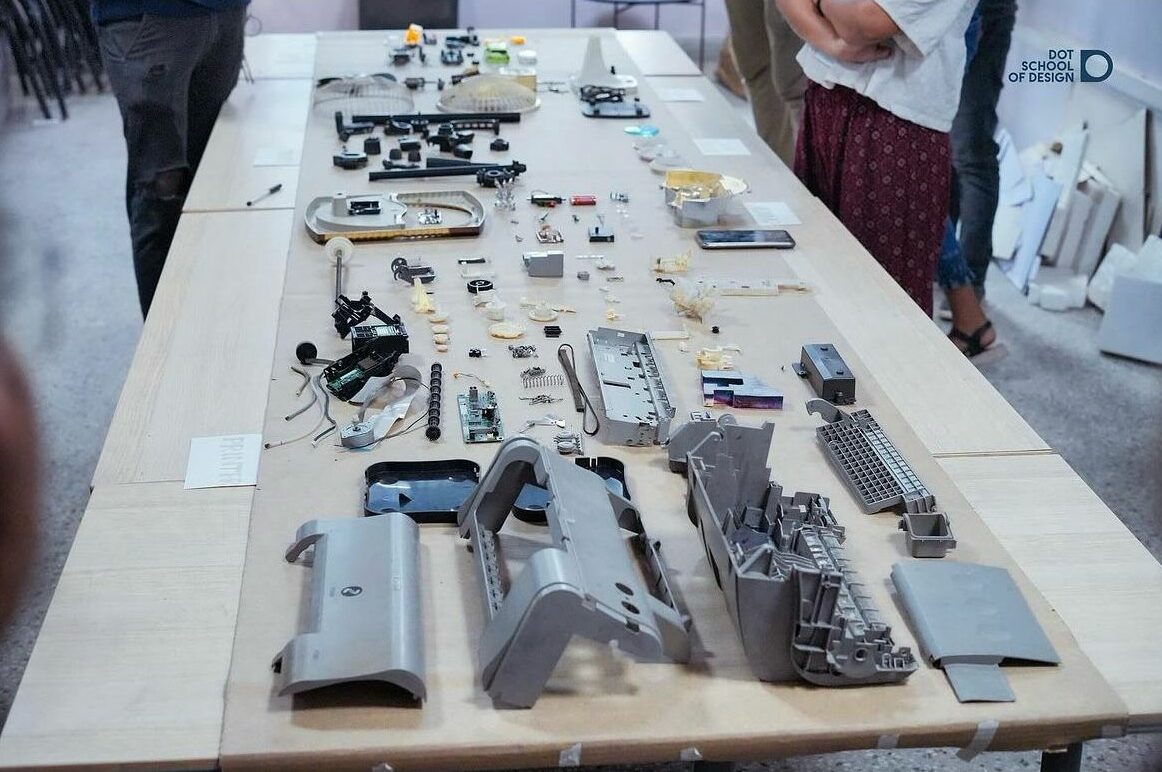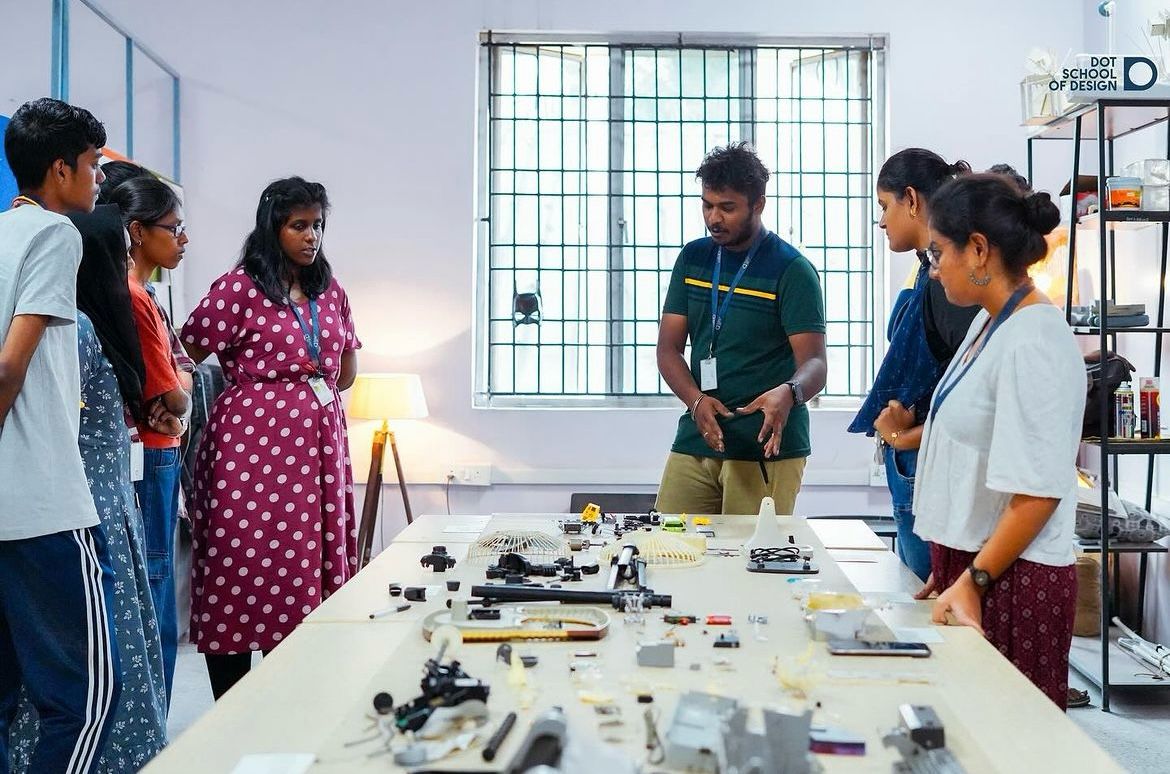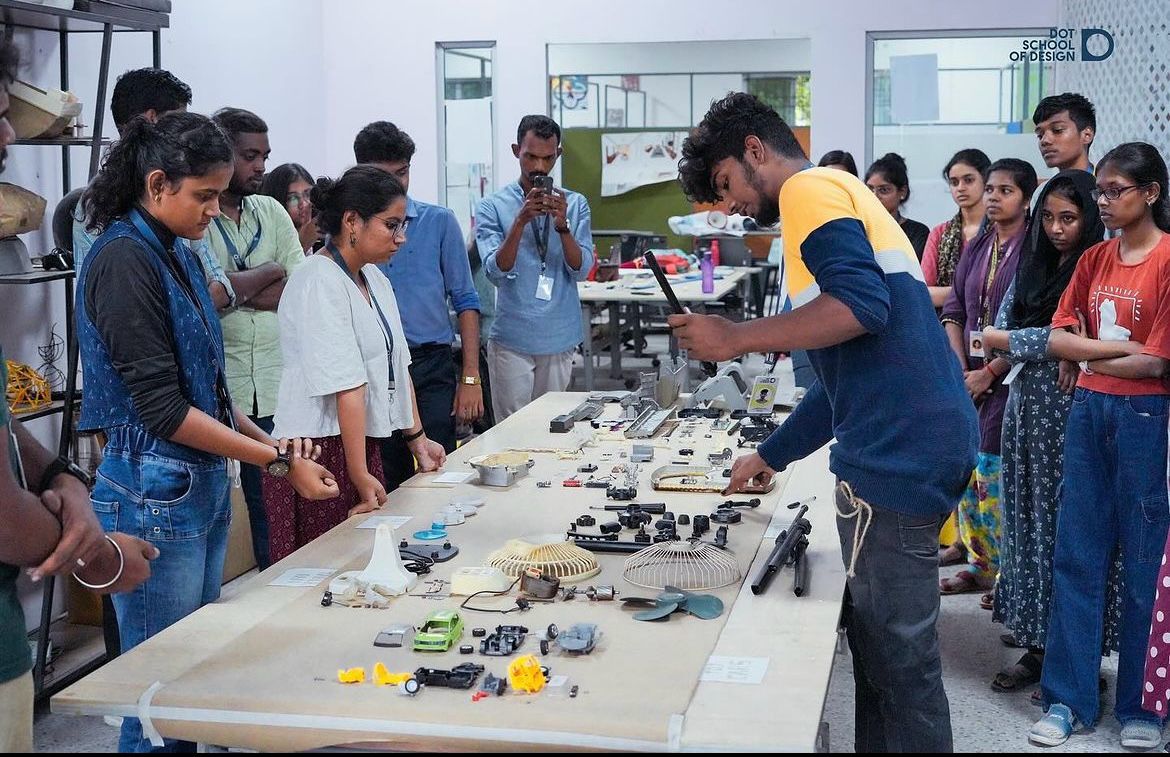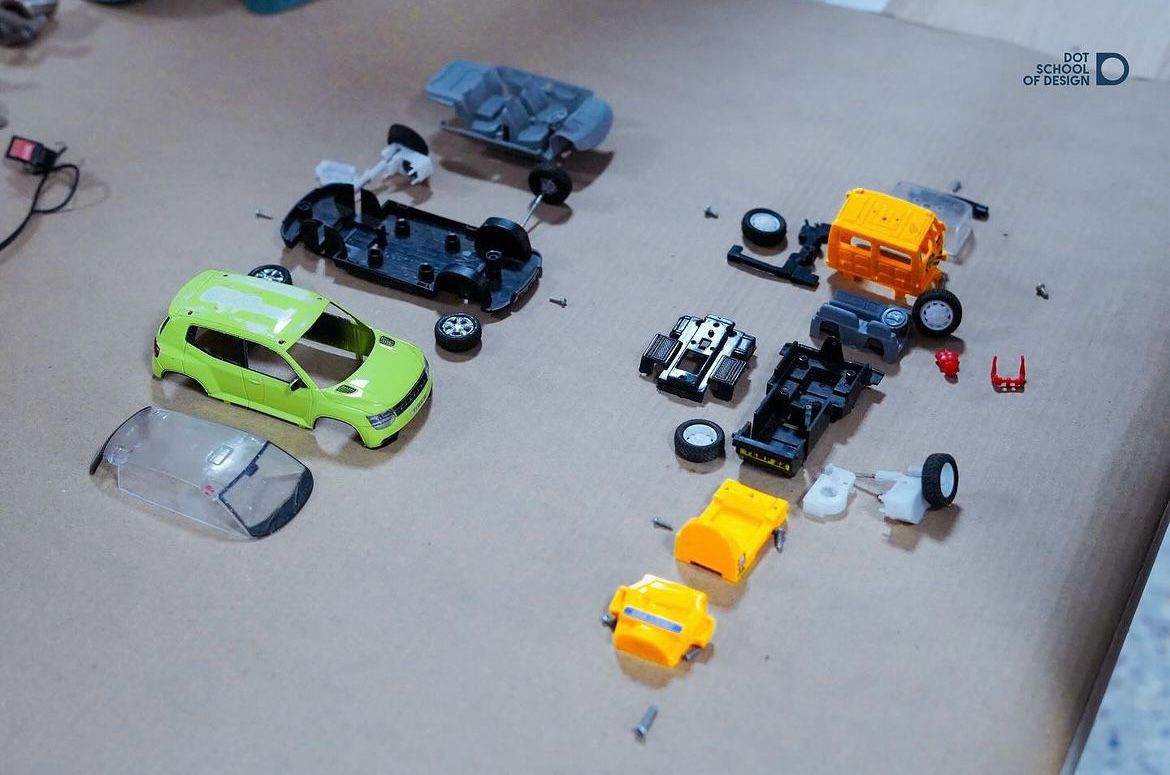Machines have always played a vital role in our lives, making our tasks easier and more efficient. From the simple machines of ancient times to the complex machines of today, machines have revolutionized the way we live and work.
But have you ever been curious to know about how machines work? What are the various components connected to its operation? Well, to guide us through this understanding, our 3rd-year industrial design students arranged a showcase “Inside Out” on 6th October 2023, where they showcased various daily use products in a dismantled format to explain the working mechanism.

Students displayed various products such as printers, camera tripods, toy cars, med boxes, table fans and wall clocks. They even explained the working mechanism of the dismantled products. The brief explanation revealed various hidden components of the products which gave clarity as to their purpose.
Another important aspect of machine anatomy is the way that the different parts of the machine are assembled. The assembly must be carefully designed so that the different parts can move freely without interfering with each other. The assembly must also be strong enough to withstand the forces that will be acting on it.
By studying the anatomy of machines in daily life, industrial design students learn how to design products that are both efficient and reliable. This knowledge is essential for creating products that can improve the quality of our lives.
Here are some examples of how the principles of machine anatomy are applied to everyday products:
Wall Clocks: Clocks use a variety of machines to keep time, including the escapement, balance wheel, and mainspring. The escapement controls the release of energy from the mainspring, which causes the balance wheel to oscillate back and forth. The balance wheel’s oscillations regulate the speed of the clock’s hands.
Printers: Printers use a variety of machines to print text and images on paper, including the printhead, ink cartridge, and paper feed mechanism. The printhead deposits ink onto the paper in a predetermined pattern to create the desired image. The ink cartridge supplies the ink to the printhead. The paper feed mechanism moves the paper through the printer so that it can be printed on.
These are just a few examples of the many ways that machine anatomy is applied in everyday products. By understanding how these machines work, we can better appreciate the complexity and ingenuity of the products that we use every day.

Ergonomics: Ergonomics is the study of how to design products that are comfortable and efficient to use. Industrial designers must consider ergonomics when designing machines to ensure that they are easy to operate and do not cause fatigue or injury.
Safety: Safety is another important consideration for industrial designers. Machines must be designed with safety features to protect users from hazards such as moving parts, sharp edges, and electrical shock.
Aesthetics: Industrial designers also consider the aesthetics of their products. They want to design machines that are not only functional but also visually appealing.
By understanding all of these factors, industrial designers can create machines that are both useful and enjoyable to use. This display was a valuable learning experience for our students and other visitors. It was great to see so many people participate, and it showed our students the importance of understanding the modules deeply.
For more blogs related to design: https://www.dotsod.in/blog/
Follow DOT School of Design on Facebook, Instagram, LinkedIn, Medium and YouTube



